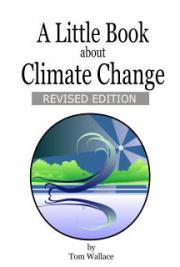Camping Tips
Whether you camp in an improved campground with all the amenities or on a patch of open ground in the backcountry wilderness, there are ways to make your outdoor living experience easier, safer and more ecologically responsible. Make good use of those tips that lend themselves to your style of camping.
Setting Up Camp
1. Arrive early. Give yourself plenty of time to set up camp before dark.
2. Choose a level spot and sweep it free of debris. If you must sleep on an incline, sleep with your head uphill.
3. Look up! Falling rocks, pinecones and dead tree branches can kill.
4. Don’t park or camp under a lone tree, especially on high ground. It (and you) will be a lightning rod in the event of an electrical storm.
5. Unroll your sleeping bag right away, so that when it’s bedtime, the bag has lofted up and is ready to offer full insulation. The same goes for your self-inflating sleeping pad.
6. Stake your tent down. Even a minor storm can blow your tent away with all its contents — including small children.
7. In sandy or loose soil, put large rocks on top of tent stakes to hold them in.
8. In rocky soil, where tent stakes won’t take, use rocks inside the corners of your tent to anchor it securely.
9. Check for potential hazards such as anthills, wasp nests, or piles of rock, branches, bark or leaves that snakes or scorpions could call home.
10. Never make camp (tent or trailer) in a natural watercourse. A rainstorm, even miles away, can turn your camp into a raging river.
11. Camp where the morning sun will strike your tent or trailer. It makes those chilly mornings a bit warmer.
12. The bottom of a valley or canyon will be colder and damper in the morning than the side of the valley. The ridge tops will almost assuredly be more exposed to weather. Try to find something in between.
13. People love camping near water, but if the water isn’t moving, it’s likely to have a large insect population hovering about.
14. If at all possible, determine the prevailing direction of the afternoon-evening wind. Locate your tent or trailer upwind of your intended campfire so smoke doesn’t blow toward and fill your sleeping quarters.
15. Always use a ground cloth (some companies call it a tent footprint). It’s another layer of insulation and moisture control, and it will protect your tent floor from excessive wear and tear.
16. In hot, buggy weather, orient your tent door toward the prevailing wind to help cool the tent interior. It also helps keep mosquitoes away from the door — they tend to gather in the eddy of the downwind side of an object.
17. If the prevailing wind is strong or stormy weather is predicted, it’s better to orient the sharper, more aerodynamic end of your tent (often the rear) toward the breeze. This will better deflect the breeze and help keep rain from blowing into the door.
18. Make camp no closer than 200 feet from water (lake, stream or river) to minimize water quality impact from your latrine or dirty dishwater.
Gear & Clothing
19. Practice setting up a new tent before leaving home.
20. Seal the seams of your tent — you’ll have a drier night. Some tents come with a tube of sealer. It’s also available at outdoor-equipment retailers.
21. I prefer aluminum over fiberglass tent poles, and flush-joint over collar-joint poles. Aluminum is more durable. Flush-joint poles slide through tent-pole sleeves more easily, making set up and take down quicker.
22. Slightly polish the connecting joints of your tent poles with super-fine-grit wet sandpaper for an easier fit.
23. If an aluminum pole joint jams, gently heat one side so it will expand.
24. If you’re on a budget, don’t “cheap out” on tents or sleeping bags. Trim money elsewhere, because mistakes with these two most critical items can be disastrous.
25. Some tents are overrated in sleeping capacity. Three feet of width per person is ideal for a comfortable sleep.
26. Clean, dry and air your tent after each trip. It will last longer and not mildew.
27. Check your tent for contents and condition prior to each trip. Give yourself enough time to replace or repair parts if needed.
28. Shop for a tent with a vestibule. The vestibule offers protected space for boots or wet gear just outside the tent.
29. Shop for a tent with a gear loft. It’s a great place to dry socks and other wet clothing if the weather is stormy.
30. Bugs are attracted to brightly colored clothing.
31. Stick to high-quality wool-blend socks for hiking. Cotton traps sweat next to your skin.
32. Leave those leftover rock concert T-shirts at home. Invest in high-quality “wicking” nor “hydrophobic” (pulls moisture away from your skin) base-layer wear.
33. Layering is the key to proper camping attire. Have a base layer, a mid-layer (insulator such as fleece) and a shell (rain jacket) on hand.
34. Break in those new boots long (weeks) before you hike a mile in them. This can be done by wearing them for a couple hours a day around the house.
35. Always carry a spare pair of bootlaces.
36. Unless you’re backpacking or going on extensive day hikes, you may not need expensive boots. Buy good trail shoes, though — your feet are among your most important assets when camping.
37. A hat is essential. It keeps the sun off your head and face during warm weather, and keeps heat from escaping from your head (a prime source of body heat loss) during cold weather.
38. Never, ever leave home without high-quality sunglasses. Throw those cheap dime- store shades away. Your retinas will be damaged by the sun’s radiation without proper protection.
39. Keep your stove clean — especially the burners and gas fittings. Clogged burners are inefficient. Dirty fittings can leak and create a fire hazard.
40. Have at least two flashlights, and spare batteries for each.
41. Consider binoculars a basic camping tool. Your trips will be more rewarding if you do.
42. Unless weight is an issue, bring a small hatchet and saw for cutting firewood.
43. Get a collapsible shovel. Uses range from latrine duty to campfire tending.
44. Those little headlamps may look silly, but they’re worth their weight in gold when you need two hands free in the dark.
45. Use stacking storage tubs to organize your camping gear. They also make it easier to transport gear from the house to vehicle to camp.
46. Down sleeping bags are best for insulation, but when wet, can lose loft and heat- retention qualities. Three-season, synthetic-fill bags are generally less expensive and a good choice for family campers.
Keeping Warm
47. Wear a cap at night. It will help conserve body heat.
48. Don’t go to bed cold. Prior physical activity will start your night warm.
49. Wear a base layer (long underwear) to bed.
50. A sleeping pad is essential for warmth. Without it, heat radiates to the ground and out of your body.
51. Wind steals heat. Keep your tent closed up. If you must, vent the tent on its downwind side.
52. Keep the next day’s clean socks and underwear inside the foot of your sleeping bag. They’ll be warm for the morning.
53. Get a sleeping bag with features such as draft tubes (keeps zippers from leaking warm air) and a collar (helps seal the top of the bag around you).
54. Although it feels warm at first, drinking alcohol just before bedtime actually robs you of body heat later.
Camp Kitchen
55. In bear country, cook and eat at least 100 feet from your sleeping area, so no food or drink spills (odors) will bring hungry visitors too close at night.
56. Always hang your food properly or store in lockers (if provided) or out of sight in your vehicle when camping in bear country.
57. Cook on a camp stove. Campfires are difficult to control and more likely to burn food and your fingers.
58. Freeze meat prior to departure. It will stay fresh longer.
59. If you must take glass-bottled beverages, wrap the bottles in aluminum foil or sealed in zip-top plastic bags, so if they break, glass shards don’t find their way onto the ground to harm wildlife.
60. Use or build a windscreen for the stove, it will conserve fuel and shorten cooking times.
61. A tarp strung over (standing room height at least) the camp kitchen keeps falling debris and rain out of food and flame.
62. No fuel-fired stoves, lanterns, heaters or other appliances should be used inside a tent. The tent can burn and fumes can kill.
63. If weight is not an issue, invest in a couple of good cast iron pieces. A deep frying pan and a Dutch oven can cook 90 percent of camp food.
64. Black-bottomed pots and pans heat up quicker than shiny, reflective ones.
65. Always bring extra fuel for stoves and lanterns.
66. Bring three separate fire-starting devices (lighters, matches, and such), waterproofed or sealed in plastic bags. The idea is that one of them will work, no matter what.
67. Filter, boil or purify all your drinking water unless it comes from a known clean source. No matter how clean the creek looks, it’s not.
68. When packing your food, don’t forget the spices — salt and pepper can liven up any meal.
69. Don’t forget potholders, but if you do, a thick hiking sock will do.
70. Make sure you have a can opener. A knife and a hammer is a dangerous substitute. Sanitation & Hygiene
71. If you are staying in improved campgrounds with trashcans, use them. If you are camping in the backcountry, take out everything you brought in. Leave no trace of your visit.
72. Seal your toilet paper in a big zip-locktype plastic baggie to keep it dry under all conditions. Wet TP doesn’t work.
73. Bring heavy-gauge plastic trash bags and double them so they don’t burst and spill their contents.
74. If you’re RV camping, a pair of long rubber gloves will make dealing with dump stations and your dump valves a lot less disagreeable.
75. Your mother told you so. Washing your hands with hot water and soap before meals or cooking is considered one of the greatest scientific advances in preventative medicine. It’s especially so when camping. If clean water is not expected to be readily available, use one of the disinfecting hand cleaners now commercially available.
76. If sinks aren’t available, excess cooking and dishwater should be disposed of at least 200 feet from the nearest body of water, in soil that drains well.
77. Never dump or bury food scraps. Flies and animals will find it, and so will the next person to camp there.
78. Use biodegradable soap products.
79. If you want to bathe in a river, creek, pond or lake, don’t use soap. Even biodegradable products will leave a residue for a long time.
80. Urinating in the outdoors is relatively eco-friendly, as long as it’s not done anywhere near a camp, trail, body of water or on a plant.
81. If you must “poop” outdoors, do it well away from water sources, trails and campsites. Dig a “cat hole” and bury the waste.
Kid's Tips
82. Bring a game of checkers. It’s a simple game and young, old, and in-between can enjoy the action.
83. A good old-fashioned deck of cards is a winner on any camping trip.
84. Spend a night with your kids in the tent in the backyard before their first trip. It’s a good way to familiarize children with sleeping outdoors.
85. Let them bring their own pillows. A little bit of familiarity goes a long way.
86. Give each a flashlight. Teaching them appropriate use of this basic camping tool is a good place to start. It’s also a good“security blanket” at night.
87. Consider battery-powered camp lanterns. No flames and no heat.
88. Dress them as you would yourself,







